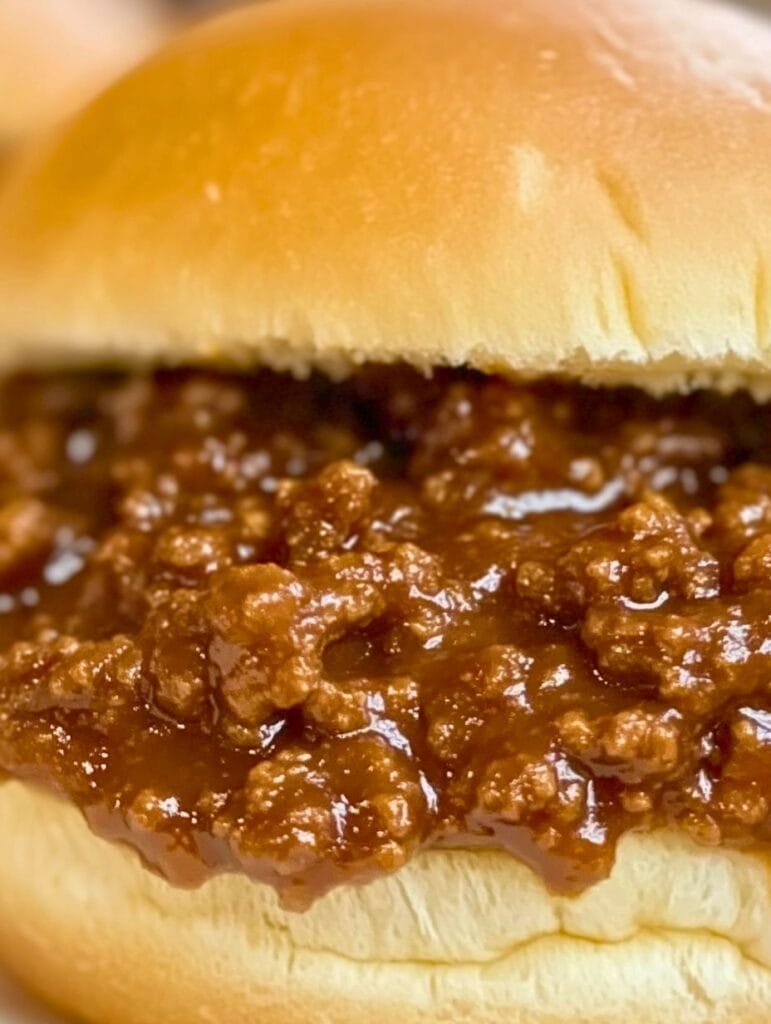This classic French crepe recipe is your gateway to a world of delicious possibilities. Forget complicated techniques; this guide breaks down every step to ensure you get light, delicate, and buttery crepes every single time. They are incredibly versatile, forming the perfect canvas for your favorite sweet or savory fillings.

Cuisine: French
Prep Time: 40 minutes
Cooking Time: 30 minutes
Total Time: 1 hour 10 minutes
Servings: About 14 crepes
Here’s a great video that shows the process of making French Crepe.
Why You’ll Love Making It
- Incredibly Simple: The batter comes together in under a minute using a blender. No fancy whisking techniques are required!
- Authentic Texture & Flavor: This recipe yields crepes that are exactly as they should be: thin and delicate with soft, tender centers and beautiful, lacy edges.
- Endlessly Versatile: Master this one base recipe and you can create dozens of variations. We’ll provide ideas for both sweet dessert crepes and savory meal-worthy crepes.
- Make-Ahead Masterpiece: The batter can be prepared a day in advance, and cooked crepes store beautifully in the fridge or freezer, making breakfast or dessert an absolute breeze.
- No Special Pan Needed: While a crepe pan is nice, it’s not necessary. We’ll show you how to get perfect results with a standard non-stick skillet.
Ingredients
- 3 Tablespoons (43g) unsalted butter, melted and cooled: This adds richness and flavor, and helps prevent the crepes from sticking.
- 1 cup (125g) all-purpose flour: Spoon the flour into your measuring cup and level it off. Don’t pack it in, as too much flour can make the crepes heavy.
- 1 Tablespoon granulated sugar: Adds just a touch of sweetness for dessert crepes. You can omit this entirely for a purely savory version.
- ⅛ teaspoon salt: A crucial ingredient that balances the flavors and enhances the overall taste.
- ¾ cup (180ml) whole milk, at room temperature: Whole milk provides the best richness and texture.
- ½ cup (120ml) water, at room temperature: Water helps thin the batter to that classic, delicate consistency.
- 2 large eggs, at room temperature: These provide the essential structure and bind everything together.
- 1 ½ teaspoons pure vanilla extract: Adds a beautiful aroma and flavor to sweet crepes. Omit for savory dishes.
- 3–4 Tablespoons (43g–56g) unsalted butter, for greasing and cooking: You’ll use this a little at a time to keep the pan perfectly non-stick for each crepe.
Instructions
Step 1: Prepare the Batter
- Melt the Butter: Melt 3 tablespoons of butter in the microwave or a small saucepan. Set it aside to cool for about 5 minutes. It should be liquid, but not hot enough to cook the eggs.
- Combine in a Blender: Add the cooled melted butter, flour, sugar, salt, milk, water, eggs, and vanilla extract to a blender.
- Blend Until Smooth: Secure the lid and blend on medium-high speed for 20-30 seconds, or until the batter is completely smooth with no lumps. The final consistency should be similar to heavy cream.
- Rest the Batter (The Most Important Step!): Pour the batter into a bowl, cover it with plastic wrap, and let it rest in the refrigerator for at least 30-60 minutes, or up to 24 hours. Do not skip this step! Resting allows the gluten in the flour to relax, which is the secret to tender, delicate crepes instead of rubbery ones. It also allows the flour to fully absorb the liquid, improving the texture.
Step 2: Cook the Crepes
- Prepare Your Station: Before you start, give the chilled batter a quick stir to recombine any ingredients that may have separated. Set up your station with the bowl of batter, a ladle or ¼ cup measure, your reserved butter for greasing, and a plate for the finished crepes.
- Heat the Pan: Place an 8-inch non-stick skillet over medium heat. Let it get properly hot. A good test is to add a tiny drop of water; it should sizzle and evaporate immediately.
- Grease the Pan: Add about ¼ teaspoon of butter to the hot pan and swirl it around to coat the bottom.
- Pour and Swirl: Pour about 3-4 tablespoons of batter into the center of the pan. Immediately pick up the pan and tilt and swirl it in a circular motion to spread the batter into a thin, even layer that covers the bottom. The first crepe is often a “test crepe,” so don’t worry if it’s not perfect!
- Cook the First Side: Cook for 1-2 minutes. You’ll know it’s ready to flip when the edges begin to dry and lift away from the pan, and the surface looks matte and no longer wet.
- Flip and Finish: Use a thin spatula to gently lift one edge of the crepe. If it releases easily, slide the spatula underneath and flip it over. Cook for another 30-60 seconds on the other side. It doesn’t need to brown much on the second side.
- Stack ’em Up: Slide the finished crepe onto a plate. Repeat the process with the remaining batter, adding a small amount of butter to the pan between each crepe to prevent sticking.
Step 3: Fill, Fold, and Serve
Serve your crepes warm. You can simply stack them and let everyone build their own.
How to Fold Crepes:
- The Triangle: Spread the filling over the entire crepe, fold it in half, then fold it in half again to create a triangle.
- The Roll-Up: Spread the filling in a line down the center and roll it up like a cigar.
FAQs
What’s the difference between a crepe and a pancake?
Crepes are much thinner and more delicate than American-style pancakes. This is because crepe batter is runnier and doesn’t contain a leavening agent like baking powder, so they cook flat instead of rising and becoming fluffy.
Can I make these crepes ahead of time?
Absolutely! The batter can be made and stored in an airtight container in the refrigerator for up to 24 hours. Cooked crepes can be stacked with a small piece of parchment paper between each one, wrapped tightly in plastic wrap, and stored in the fridge for up to 3 days or in the freezer for up to 2 months. Reheat them in a lightly buttered skillet or for a few seconds in the microwave.
Why are my crepes sticking to the pan?
This usually happens for two reasons: the pan isn’t hot enough when you add the batter, or it isn’t greased properly. Make sure the pan is preheated over medium heat and add a small amount of butter before each crepe. A good quality non-stick skillet is your best friend here.
Why did my crepes turn out rubbery or chewy?
The most likely culprit is skipping the resting step for the batter. Resting allows the gluten to relax, which makes the final crepe tender. Over-mixing the batter can also develop the gluten too much, so blend it just until it’s smooth and then stop.

 Aliquam in sagittis nulla. Curabitur euismod diam eget risus venenatis, sed dictum lectus bibendum. Nunc nunc nisi, hendrerit eget nisi id, rhoncus rutrum velit. Nunc vel mauris dolor. Class aptent taciti sociosqu ad litora torquent per conubia nostra, per inceptos himenaeos. Aliquam fringilla quis nisi eget imperdiet.
Aliquam in sagittis nulla. Curabitur euismod diam eget risus venenatis, sed dictum lectus bibendum. Nunc nunc nisi, hendrerit eget nisi id, rhoncus rutrum velit. Nunc vel mauris dolor. Class aptent taciti sociosqu ad litora torquent per conubia nostra, per inceptos himenaeos. Aliquam fringilla quis nisi eget imperdiet.




Love the idea of chilling the batter, never thought of it before! Gonna try this weekend.
Chilling really helps the texture! Good luck, you’ll love it.
can i use almond milk insted of regular milk here? thanks
I don’t think crepes should be filled with ham and cheese. Isn’t it too heavy for such a delicate dish?
I followed this recipe to the letter, but my crepes were too thick. I think the batter ratio is off. Disappointed.
looks easy enough for breakfast, might try if i wake up early enough lol
I’d make these but I crepe at cooking! 🥁
haha good one!
Are there any gluten-free options for this batter?
can i add protein powder to this?
Every time I try making crepes, they end up in disaster. I doubt this recipe will change that.
Is resting the batter really necessary, or is it just a cooking myth? Has anyone done a side-by-side comparison?
Nutella in crepes is the best thing ever!!! can’t wait to try.
what happens if i dont chill the batter? dont have much time 🙁
I made crepes once and they turned into pancakes lol, not sure what I did wrong but they were still tasty.
Crepes remind me of Sundays at my grandma’s. Can’t wait to recreate those moments.
Yet another great recipe, Sandra! Your crepes are next on my list.
Why do we blend the ingredients instead of mixing them manually?
Just add more sugar, makes everything better lol.
Is there a traditional way to cook these without a nonstick pan?
sweet! gonna bake these for my kids, hope its as easy as it looks
Did you calculate the optimal temperature for the skillet?
1. Chill batter. 2. Heat skillet. 3. Pour batter. Got it!
Making these crepes will be my weekend meditation. Thanks for sharing.
tried it, failed it, crepes stuck to the pan, what a mess
Can’t wait to experiment with different fillings. Any unique suggestions?
I’ll add some herbs from my garden into the batter. Fresh basil crepes, anyone?
Does chilling really make a difference, or is it just another kitchen myth?
Can I skip chilling? too much wait.
Any tips for making these crepes more protein-rich?
The texture was off for me, not what I expected from a crepe.